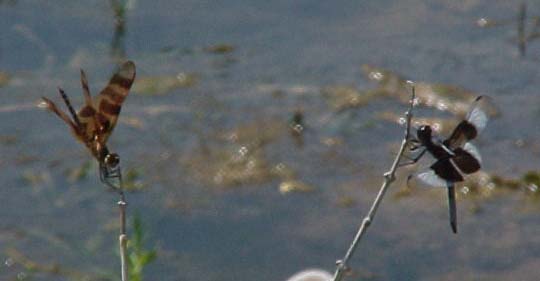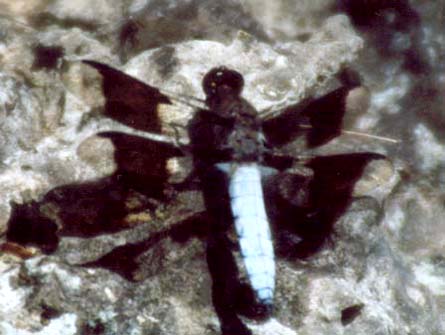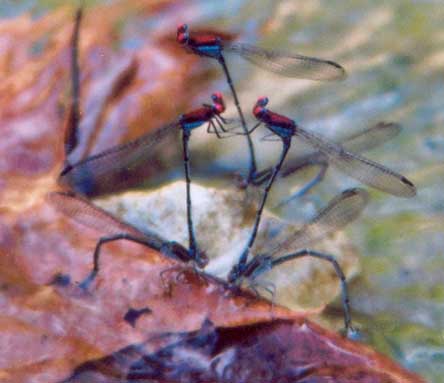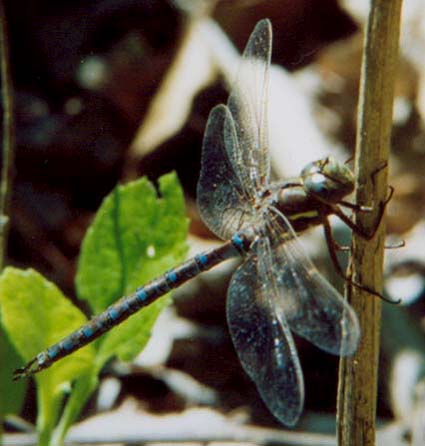Dragonflies & Damselflies

Halloween Pennant (L) & Widow Skimmer

Commom Whitetail - male
"ODES" - Dragonflies and Damselflies
Odes, short for the order Odonata, is the order of insects containing the dragonflies and their smaller relatives, the damselflies.
They are fascinating aerial predators, eating mostly other insects, and come in a dazzling array of shapes and colors. They are enjoying a popularity never before known, and as a result we are learning lots more about them.
There are now field guides out about dragonflies, much like bird field guides with photos and range maps so regular people like you and me can identify many of them the first time we see them.
There are also many great websites available with a tremendous amount of information on them, so even without a book, you can ID what you see. Hopefully the photos here will serve that purpose to some degree as we get the local species up. Find some binoculars that focus closely, and you'll be amazed the detail and marks you can see on the dragons. You can ID most of them easily. You may need a net to learn damselflies though.

American Rubyspot
Like butterflies, most odes like the heat of the day, and are the perfect diversion when birding slows down mid-day. Since they live a year or two mostly, as larvae underwater, areas with water are usually the best place to look for them. Most only live as flying adults for weeks or months. Some migrate tremendous distances!

Roseate Skimmer
It's best if you visit some of the fantastic Ode sites out there to see good pictures of all of them. (Not the fuzzy junk seen here). And get a copy of "Dragonflies through Binoculars," by Sid Dunkle!
Using the tool bar at the top of this page, or the link box you'll get to scrolling down below you can see other pages here with dragon or damsel photos, a list of what I've found here, some news and notes about them, and a page with new records.

Argia cuprea (Coppery Dancer)

Springtime Darner
Special thanks to Tony Gallucci, Greg Lasley, Tom Langschied, Dr. John Abbott, and Dennis Paulson for help in identifying some of these beasts. I am grateful! ID errors on this site are the sole fault of the author dingbat, me. :):)
References & Links
For further study, there are some excellent dragonfly websites from which you can identify virtually anything you find. Here's one to get you started ... from here, you can find anything in the whole wide world web. You may wish to bookmark this to visit later, as the link will take you off of this site.
Odonata Central

Ivory-striped Sylph

To Ode Photos
Dragonfly & Damselfly List
Ode News
NEW Uvalde Co. Ode records
Birds
Bird News
Utopia Birds
Birding Sites
Bird List
Bird Photos
Bird Guide
Reports from Lost Maples
Winter Bird Count
Butterflies
Butterfly News
Butterfly Photos
Rare Butterflies
Critters, Bugs, & Stuff
Lost Maples
Garner State Park
Local Site Guide
Home

Our E-mail
mitch @ utopianature.com
 All photographs within this site are copyrighted
All photographs within this site are copyrighted